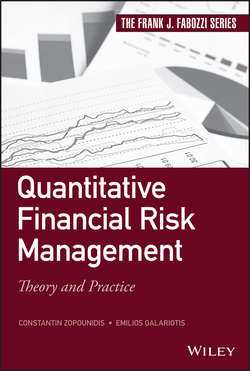Читать книгу Quantitative Financial Risk Management - Galariotis Emilios - Страница 16
На сайте Литреса книга снята с продажи.
Section One
Supervisory Risk Management
Chapter 2
Supervisory Requirements and Expectations for Portfolio-Level Counterparty Credit Risk Measurement and Management
Review of the Literature
ОглавлениеSupervisory rules and guidance on CCR can be found in the Basel Committee on Banking Supervision (BCBS) frameworks of Basel I (BCBS, 1988); Basel II (BCBS, 2006); Basel III (BCBS, 2011); and BCSB (2012). The U.S. Office of the Comptroller of the Currency (OCC) and the Board of Governors of the Federal Reserve System (BOG-FRS) issued supervisory guidelines (OCC & BOG-FRS 2011). Kang and Kim (2005) provide simple closed-form pricing models for floating-rate notes and vulnerable options under the CCR framework, deriving closed-form pricing models for them and illustrating the impact of the counterparty default intensity on the prices of floating-rate notes and vulnerable options.
Brigo and Chourdakis (2009) consider CCR for credit default swaps when default of the counterparty is correlated with default of the CDS reference credit. They incorporate credit spread volatility, adopt stochastic intensity models for the default events, and connect defaults through a copula function. The authors find that both default correlation and credit spread volatility have a relevant impact on the positive CCR valuation adjustment to be subtracted from the counterparty risk-free price. Jorion and Zhang (2009) observe that standard credit risk models cannot explain the observed clustering of default, sometimes described as “credit contagion,” and provide the first empirical analysis of credit contagion via direct counterparty effects. They find that bankruptcy announcements cause negative abnormal equity returns and increases in CDS spreads for creditors, and that creditors with large exposures are more likely to suffer from financial distress later, suggesting that counterparty risk is a potential additional channel of credit contagion. Arora, Gandhi, and Longstaff (2012) use proprietary data from 14 CDS dealers and find that counterparty risk is priced in the CDS market and the magnitude of the effect is small. Brigo, Capponi, Pallavicini, and Papatheodorou (2013) value bilateral CCR through stochastic dynamical models when collateral is included with possible rehypothecation. The authors show for credit default swaps that a perfect collateralization cannot be achieved under default correlation.
Brigo, Buescu, and Morini (2012) compare two different bilateral counterparty valuation adjustment formulas (an approximation based on subtracting the two unilateral credit valuation adjustment formulas as seen from the two different parties in the transaction) and a fully specified bilateral risk formula where the first-to-default time is taken into account. Finally, Acharya and Bisin (2014) study financial markets where agents share risks but have incentives to default and their financial positions might not be transparent, that is, not mutually observable. The authors show that a lack of position transparency results in a counterparty risk externality, which manifests itself in the form of excess “leverage” in that parties take on short positions that lead to levels of default risk that are higher than Pareto-efficient ones.
